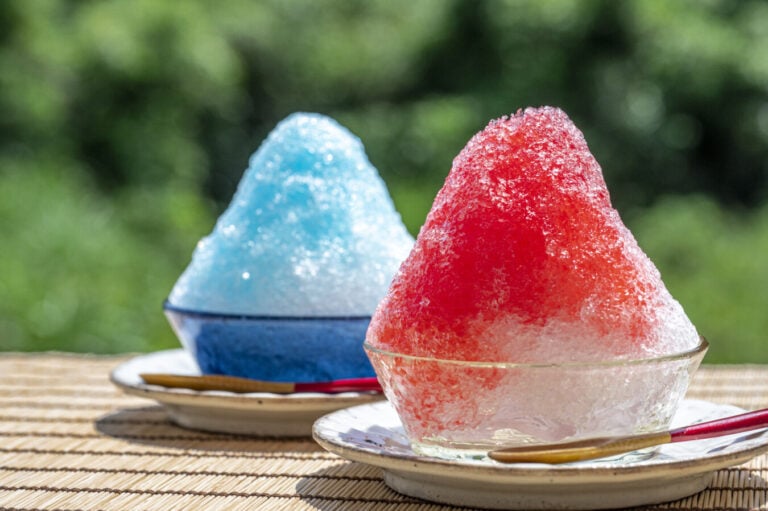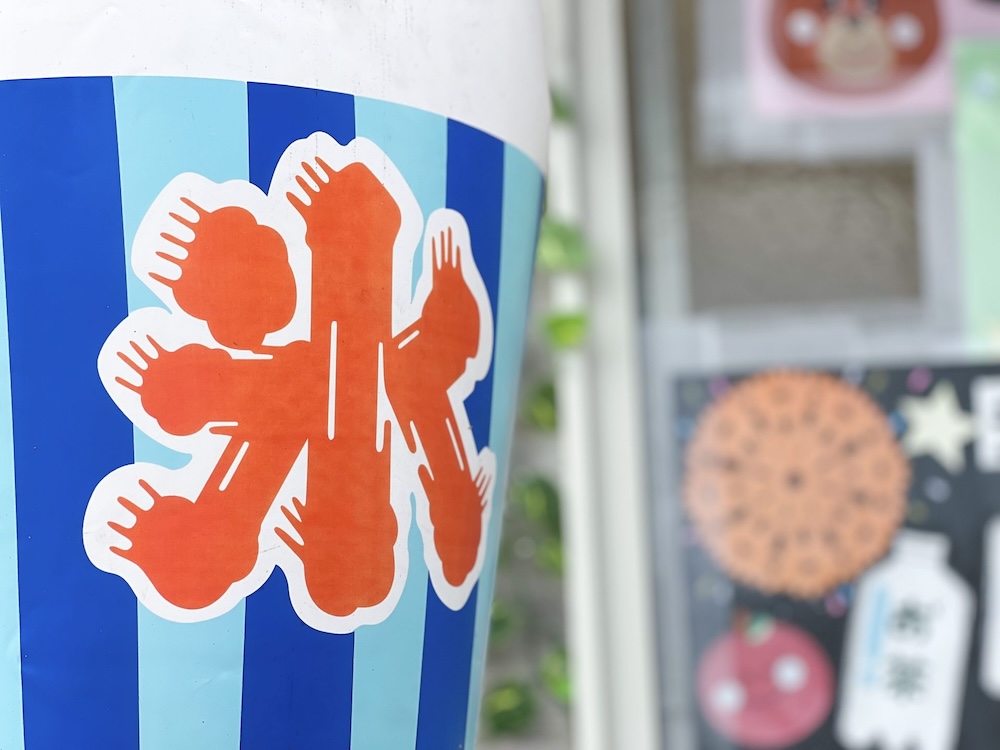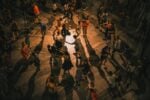
Which, if you’re in Japan, isn’t too far off the ominous warning that accompanies “winter is coming”. Summer in Japan means 35+ degree celsius temperatures, very high humidity, lots of sweat, and near-constant cries of “mushiatsui! (蒸し暑い – It’s hot and humid)” (except for maybe Hokkaido. Although in recent years, it sounds like it’s been experiencing its own heat waves as well).
Everywhere in the world has their own way of cooling off during the summer months, and Japan is no different. Take a walk around any populated area and you’ll see an abundance of handheld fans, cooling neck rings, wet towels, and what seems like hundreds of other ways to beat the heat. If there’s one thing that screams summer to a Japanese person, however, it’s kakigōri かき氷 , or shaved ice.
I know what you’re thinking, because I definitely did too: the mealy balls of ice you get at summer fairs that never hold any of the syrup poured over top and end up tasting like nothing? No, thank you. But, I implore you to withhold further judgment until you’ve tried some. I spent two years in Japan before I decided to give them a shot when a friend suggested we get some at a cafe. Any doubts I had disappeared the moment I received my order. The ice was unlike anything I’d had back home; it was fluffy and light, and practically melted the moment it touched my mouth.

A Long Running Japanese Tradition
Japan’s modern-day population is far from the first to experience this sweet treat, however, as kakigōri has a long history. Stretching back to the Heian period, to be exact. At the time, it was known as kōrimizu (氷水), or ice water. It was prepared using ice harvested and preserved during the cold winter months. Stored in himuro (氷室 – ice room/house) which were situated in a deep hole dug to help insulate and maintain a consistent temperature, the ice could then be used into the summer. These stores of ice would then be shaven and topped with honey. While the upper class enjoyed this delicious respite from the summer heat, common people, unfortunately, would not have access to it until the Meiji era. Until then, kakigōri was to be enjoyed by the Japanese aristocracy and nobility.
Incidentally, you can still see a few of these ice houses. Three of the five remaining ice houses are in the Nikko area, and you can even try kakigōri made from the ice kept there!
How Do I Eat Thee? Let Me Count the Ways
There are many ways to enjoy kakigōri. The most basic is finely shaved ice topped with flavored syrup and, optionally, condensed milk for extra sweetness. While you can find a myriad of flavors at specialty shops and cafes, summer festivals usually keep their options to ones like strawberry, cherry, lemon, green tea, grape, melon, and “Blue Hawaii” (inspired by the Hawaiian cocktail of the same name). This style is commonly found at summer festivals due to the ease with which supplies can be transported to and from the venue.
A popular variation on kakigōri is called Shirokuma (白熊), meaning ‘polar bear’. Instead of flavored syrup, condensed milk, small colorful mochi, fruits, sweet bean paste (usually Azuki bean), mandarin oranges, cherries, pineapples, and raisins can all be used to sweeten and add flavor to this style of shaved ice. Shirokuma is said to have originated in Kagoshima sometime in the Edo period.
Another popular way of preparing kakigōri is Ujikintoki (宇治金時). This style is named after the small city in Kyoto prefecture called Uji, and kintoki refers to the red bean paste used to make it. Given Kyoto’s fame for matcha production, you can imagine some of the ingredients used. In addition to red bean paste, Ujikintoki is topped with flavored green tea syrup, mochi, and served with matcha ice cream (抹茶アイス). While serving shaved ice with ice cream may sound like an odd and perhaps redundant combination to some, it’s a popular one in Japan, as the difference in textures compliment one another.

If you’ve decided to seek out this refreshing dessert this summer, there is no shortage of places to find it. Every city in Japan seems to have its own summer festival going on sometime in July. Summer is a popular time for countless other festivals, however, so if you can’t make it to one in July, check your city’s official website. Maturi.info has a pretty comprehensive list of festivals throughout the country, however it’s only available in Japanese. Nothing a little Google translate can’t help fix!
If festivals aren’t really your thing, why not head to a cafe? Actually, even if you like a good summer festival, you should still make time for kakigōri at a cafe. Shaved ice at a cafe is everything you love about the bare bones syrup-topped kakigōri at festivals, but better! Of course, cafes will charge more than the usual 200 or 300 yen at said festivals, but you’ll get your money’s worth in better quality syrups, fresh or candied fruit, ice cream, and other fun toppings! Another advantage to eating in a cafe is the air-conditioned shop will significantly slow your kakigōri’s melting rate and allow you to really savor every bite. Expect to pay upwards of ¥600, although depending on how much the item includes, that price can easily reach ¥800 or ¥900.
Whatever your favorite variation of Japanese shaved ice, you’d be hard-pressed to find someone in Japan who would turn down an invite to enjoy some together. Young children in Japan get excited at the mention of mom or dad buying them some, and adults revel in the nostalgia and communal aspect of sharing kakigōri. While ice cream may be available and also well-loved, nothing can quite replace the sukkiri (スッキリ – refreshing) feeling kakigōri provides.
It’s rare that cultural traditions stay relevant and as popular as when they began. Kakigōri’s ability to stand the test of time and maintain its popularity among both those old and young makes it a part of Japanese summers that shouldn’t be missed.















